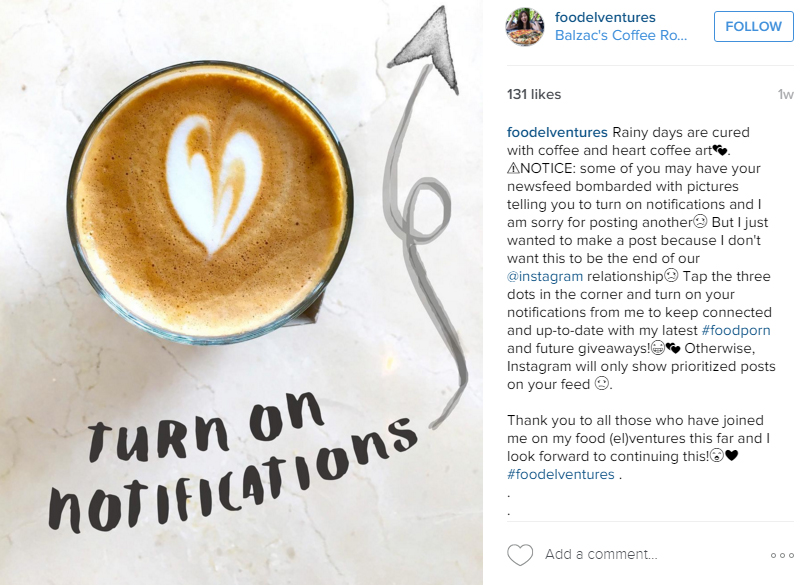Instagram to apply the ultimate ‘filter’.

Instagram recently announced they will follow in the footsteps of Twitter & Facebook, by implementing an algorithm for content feeds. What does it mean for brands and users?
If you’re an Instagram user, you’ll likely be aware that the social app recently announced upcoming plans to change the way our feeds appear. Instagram explained their plans to order the feed we see ‘based on the likelihood you’ll be interested in the content’ rather than in the current chronological format: the idea being to ensure what we see is the most relevant and interesting, rather than just the latest posts.
Despite the fact that Instagram has suggested the change will be gradual – an approach that is slowly developed and tested over time – there has still been uproarious opposition from users.
Not only have anti-change hashtags blown up (#keepinstagramthisway and #RIPinstagram tags garnering 15,300+ shares each), a Keep Instagram Chronological petition is circulating with more than 330K signatures currently. Elsewhere, 66,400+ businesses and Instagram personalities are joining the #turnmeon movement and requesting that followers turn on post notifications, in an effort to avoid falling into insta-irrelevancy.

Users are taking steps to avoid any loss of visibility.

…lots of users.
For businesses, Instagram at present is a level playing field. It rewards brands with likes and follows for creativity, honesty & engagement, rather than the size of their marketing budgets. There are benefits for brands and users alike, and communities can be grown organically. It’s an environment where the big corporations are on par with the small guys, like independent artists and small businesses.
As the platform moves to take more control over what users see, businesses may wonder what the impact could be to their marketing budgets. Users, on the other hand, are groaning at the thought of more adverts and less organic content.

Note the subtle ‘Sponsored’ tag in the top right corner of this screenshot.
But here’s the big question – do we actually have anything to worry about?
Following the Facebook precedent.
Facebook introduced their ordering algorithm in 2009. The platform continues to update its filtering systems regularly (you can see full history here), and Twitter rolled out ’while you were away’ last year followed by an opt-in filter system – largely developed from Twitter user feedback.
Both platforms were initially berated for the proposed changes, and yet they still operate successfully as key communication platforms every day. Facebook is still the largest social media platform in the world with more than 1.5 billion monthly active users worldwide.
Similarly, as Instagram’s popularity grows we’re less likely to stop using the platform, even if the algorithm update comes into effect.
So, what does this really mean for marketers and Instagrammers?
Right now – not much.
The platform says it is still only in the testing phase of this change and has promised to let the world know when changes roll out broadly.
If Twitter’s updates are anything to go by, the Instagram community should remember that collaborating by sending feedback on changes can result in new features that everyone is happy with.
Change or no change, the key take away is to focus on providing high-quality, authentic and unique contentyou’re your audiences. If it’s real and valuable, it will resonate.
That’s something algorithm updates can’t take away from you.
More Articles
Up for some more?
Get your monthly fix of August happenings and our curated Super8 delivered straight to your inbox.
Thanks for signing up.
Stay tuned, the next one isn't far away.
Return to the news.